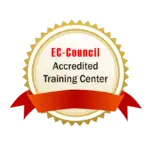In the fast-paced world of information technology, effective management of software releases is crucial for organizations to ensure smooth and seamless operations. ITIL Release Management provides a structured approach to planning, coordinating, and controlling the release of software and related IT services into the production environment. This article will delve into the key aspects of ITIL Release Management, its process components, steps for successful implementation, benefits, and strategies to enhance agility.
In a world that is moving at a fast pace, it seeks renewal and modernization all the time. Nothing is proven, especially in the field of effective management of software releases. It must be updated at the same pace because it is very important for companies and institutions.
ITIL Release Management provides a structured approach to planning, coordinating, and controlling the release of software and related IT services in a production environment. So that companies can easily do their administrative tasks and follow up on production more focused and in-depth.
The article will provide a lot of important information on the main aspects of ITIL release management, components of the process, steps for successful implementation, benefits, and strategies for enhancing resilience.
What is Release Management in ITIL?

It is represented in many important tasks that it provides to large companies and institutions, on which it relies heavily in management operations.
- Release management in ITIL is a discipline that focuses on strategic and tactical planning, scheduling, and software release control.
- It encompasses the activities involved in managing the transition of services from development to production, ensuring minimum disruption and maximum efficiency.
- The main goal of ITIL Release Management is to deliver high quality software releases that meet business needs while minimizing risk and maintaining stability.
The lower the risks, the more companies will be able to achieve more profits, and thus they can look forward to a more stable future from the economic side
clslearn offers you the best courses in the course of ITIL 4 Foundation
ITIL Release Management Process Components:
The ITIL release management process consists of several major components that together make up a workflow to ensure a controlled and efficient software release. These components include:
- Issuance Policy and Strategy: Define the organization’s approach to issuances, including issuance eligibility criteria, risk assessment and prioritization. The consequence of developing the basic plan of the organization
- Release Planning: Develop a comprehensive release plan that defines release sequencing, timing, and dependencies, taking into account business requirements and resource availability. As flexibility is one of the most important characteristics that you must have in order to be able to adapt to all the work and conditions that the work goes through Release Build and Configuration: Assembling and configuring software components, ensuring proper version control, and conducting necessary testing and quality assurance activities.
- Release Deployment: Moves the release package to the production environment, including activities such as installation, configuration, and data migration. In order to get started with a presence of work steps and data
- Release validation and testing: Extensive testing and validation of a release to ensure that it meets pre-determined quality standards and is fit for production use. In order to ensure the safety of the system as a whole so that no problems occur later.
- Release Communication and Training: Communicate release-related information to stakeholders, provide training and support to end users, and manage expectations throughout the release process. So that it is easy to deal with the program through users
Steps to a Successful ITIL Release Management Process:

Implementing an effective ITIL Release Management process requires a systematic approach. Here are the key steps to follow:
- Defining Release Management Policies: Developing clear policies and guidelines that align with the organization’s goals and objectives. As each organization has its own system that is different from other organizations, which requires real knowledge of the nature of the organization.
- Create a Release Calendar: Develop a release calendar that outlines the release schedule, including planned releases, maintenance windows, and blackout periods.
- Establish Change Control Processes: Integrate Release Management with Change Management to ensure proper evaluation and approval of changes before release.
- Conduct Release Readiness Assessments: Conduct comprehensive release readiness assessments, including testing, documentation, and stakeholder alignment. In order to produce correct results with high rates that do not make mistakes except with very few percentages.
- Automate release processes: Leverage automation tools to streamline release activities such as build, deployment, and testing to boost efficiency and reduce errors. In order to produce results that can be understood and dealt with by all workers well and easily
Benefits of ITIL Release Management:
Effective implementation of ITIL Release Management can yield numerous benefits for organizations, including:
- Reduced Service Disruptions:
By following a structured release process, organizations can reduce the risk of outages and ensure that changes are thoroughly tested prior to deployment. This guarantees us great success rates
- Improved Service Quality:
ITIL Release Management helps deliver high-quality software releases by enforcing standardized testing, validation, and documentation processes. Which leads to more confidence and ensuring the validity of the data and management systems provided
- Enhanced Business Agility:
A well-structured release management process allows organizations to quickly respond to changing business needs, enabling faster market access for new features and functionality. This facilitates access to entities that can help develop organizations faster and more effectively
- Increased Stakeholder Satisfaction:
By effectively communicating release-related information and managing expectations, ITIL Release Management helps build trust and satisfaction among stakeholders. Since relationships based on trust, especially in the field of work, are the reason for high and good productivity
Ways to Structure Your Release Management Process in ITIL for Improved Agility:

To enhance agility within the ITIL Release Management process, consider the following strategies:
Adopt DevOps Practices: Embrace DevOps principles to foster collaboration between development and operations teams, enabling continuous integration, delivery, and deployment.
Implement Agile Release Trains: Use Agile methodologies, such as Scrum or Kanban, to organize release activities into iterative and incremental cycles, promoting faster and more frequent releases.
Leverage Continuous Integration and Deployment: Utilize automated tools and technologies to enable continuous integration and deployment, allowing for smaller, more frequent releases.
Encourage Cross-Functional Collaboration: Foster collaboration between various teams involved in the release process, including development, operations, testing, and business stakeholders, to streamline coordination and decision-making.
ITIL Release Management is a vital component of the effective management of IT services. By following the steps that make up the process that help organize and implement the steps outlined in this article, organizations can achieve remarkably successful version management, resulting in fewer disruptions to production, improved quality of service for the benefit of the customer, and dramatically improved business agility. And ultimately increase stakeholder satisfaction. Moreover, adopting strategies to enhance flexibility in the release management process allows organizations to quickly respond to changing market demands and maintain a competitive advantage in the digital landscape.
























